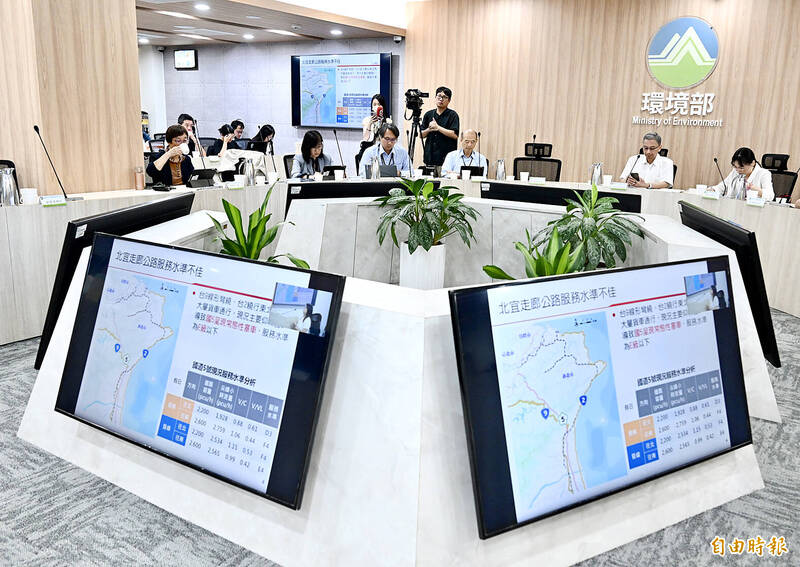Report on Integrated Optimization of Plug-in Hybrid Electric Vehicle (PHEV) Energy Management Systems for Sustainable Development Goals
Executive Summary
This report details a multi-objective optimization of a Plug-in Hybrid Electric Vehicle (PHEV) Energy Management Strategy (EMS) designed to address key United Nations Sustainable Development Goals (SDGs). The escalating dependence on fossil fuels undermines global progress towards SDG 7 (Affordable and Clean Energy), SDG 11 (Sustainable Cities and Communities), and SDG 13 (Climate Action). PHEVs offer a viable transition technology, but their effectiveness depends on balancing conflicting objectives. This study introduces an integrated optimization framework focusing on three pillars: Energy (fuel consumption), Environment (pollutant emissions), and Economy (battery degradation costs), directly aligning with the SDGs. A PHEV model was developed and its components were optimized using a genetic algorithm. A fuzzy logic controller for the EMS was subsequently optimized across three scenarios with varying objective functions. The results conclusively demonstrate that a holistic, three-objective optimization strategy provides the most balanced and effective outcomes. This approach achieved average reductions of 3.3% in emissions and 4.4% in battery degradation, with a negligible 0.02% increase in fuel consumption, showcasing a superior pathway to achieving sustainable transportation compared to strategies with fewer objectives.
1. Introduction: Aligning Automotive Technology with Global Sustainability Mandates
The global imperative to reduce fossil fuel dependency and mitigate environmental degradation is enshrined in the Sustainable Development Goals. The transportation sector, a major contributor to pollution and energy consumption, is a critical area for intervention. This research addresses the development of PHEVs as a technological solution aligned with the following SDGs:
- SDG 7 (Affordable and Clean Energy): By reducing reliance on fossil fuels and improving energy efficiency.
- SDG 11 (Sustainable Cities and Communities): By lowering pollutant emissions (CO, HC, NOx) to improve urban air quality.
- SDG 12 (Responsible Consumption and Production): By extending battery lifespan, thereby reducing the economic and environmental costs associated with battery manufacturing and replacement.
- SDG 13 (Climate Action): By minimizing fuel consumption and associated greenhouse gas emissions.
This study develops an Energy Management Strategy (EMS) that simultaneously optimizes for energy, environmental, and economic (E3) factors, creating a comprehensive framework for maximizing the contribution of PHEVs to these global goals.
2. Methodology: Modeling for Sustainable Performance
2.1. PHEV Configuration and Modeling
A parallel PHEV configuration was modeled based on the Samand vehicle platform using experimental data. The simulation, conducted in Simulink/Advisor, utilized an internal combustion engine (ICE) and an electric motor (EM) as dual power sources, with a lithium-ion battery for energy storage.
2.2. Energy Storage and Battery Life Modeling for SDG 12
To promote SDG 12 (Responsible Consumption and Production), minimizing resource use and waste is paramount. The high cost and environmental impact of battery replacement necessitate strategies to extend battery life. This study employed a semi-empirical model to predict battery aging, accounting for key stress factors.
- Equivalent Circuit Model (ECM): A series resistance (Rint) ECM was used to model the battery’s electrical behavior.
- Cycle Life Model: A semi-empirical aging model was implemented to quantify capacity loss ((:{Q}_{loss})) based on temperature, state-of-charge (SOC), and C-rate. This model is crucial for optimizing the EMS to reduce battery degradation and align with responsible production and consumption patterns.
2.3. Driving Cycle Development for SDG 11
To ensure the relevance and effectiveness of the optimization for SDG 11 (Sustainable Cities and Communities), real-world driving conditions must be considered. This study utilized five distinct driving cycles to represent a range of traffic scenarios, from congested urban environments to high-speed highways.
- FTP-75
- NEDC
- Tehran-Long (developed from real-world data)
- Tehran-Short (developed from real-world data)
- WLTP-Class3
By testing the EMS against these varied cycles, the study ensures that the developed strategies can deliver tangible improvements in fuel efficiency and emissions reduction in realistic urban and suburban settings.
3. Optimization of PHEV Systems for Sustainability
3.1. PHEV Component Sizing
The initial optimization phase focused on sizing the core components (ICE, electric motor, battery) to minimize fuel consumption and emissions, directly supporting SDG 7 and SDG 13. A genetic algorithm was used to determine the optimal size of each component while adhering to the Partnership for a New Generation of Vehicles (PNGV) performance constraints.
3.2. Energy Management Strategy (EMS) Optimization
A fuzzy logic controller was designed to manage the power distribution between the ICE and the electric motor. To maximize the vehicle’s contribution to the SDGs, the controller’s rules were optimized using a genetic algorithm across three distinct scenarios.
3.3. Multi-Objective Optimization Scenarios
The core of the research involved optimizing the EMS under three scenarios to evaluate the trade-offs between different sustainability objectives.
- Scenario 1: Single Objective Function (Energy and Economy Focus)
- Objective: Minimize a weighted sum of equivalent fuel consumption (SDG 7, SDG 13) and battery degradation (SDG 12).
- Scenario 2: Two Objective Functions (Energy/Environment and Economy Focus)
- Objective 1: Minimize a weighted sum of fuel consumption and emissions (SDG 7, SDG 11, SDG 13).
- Objective 2: Minimize battery degradation (SDG 12).
- Scenario 3: Three Objective Functions (Integrated E3 Approach)
- Objective 1: Minimize fuel consumption (Energy – SDG 7, SDG 13).
- Objective 2: Minimize pollutant emissions (Environment – SDG 11, SDG 13).
- Objective 3: Minimize battery degradation (Economy – SDG 12).
4. Results: Evaluating Pathways to Sustainable Mobility
The optimization results highlight the importance of a comprehensive, multi-faceted approach to achieving sustainability. The performance of each scenario was evaluated against the initial, unoptimized state.
4.1. Results of Single Objective Optimization
This scenario demonstrated a clear trade-off. While it successfully reduced battery degradation, it did so at the expense of increased fuel consumption.
- Average battery degradation reduction: 13.5% (Positive impact on SDG 12)
- Average fuel consumption increase: 3.0% (Negative impact on SDG 7 & 13)
4.2. Results of Two Objective Optimization
This scenario also showed a significant reduction in battery degradation but resulted in an increase in both fuel consumption and emissions.
- Average battery degradation reduction: 10.0% (Positive impact on SDG 12)
- Average fuel consumption increase: 1.9% (Negative impact on SDG 7 & 13)
- Average emissions increase: 5.7% (Negative impact on SDG 11 & 13)
4.3. Results of Three Objective Optimization (Superior Outcome)
The integrated E3 approach, which treated energy, environment, and economy as separate but concurrent objectives, yielded the most balanced and beneficial results. It achieved significant progress on environmental and economic goals with a negligible compromise on energy efficiency.
- Average emissions reduction: 3.3% (Positive impact on SDG 11 & 13)
- Average battery degradation reduction: 4.4% (Positive impact on SDG 12)
- Average fuel consumption increase: 0.02% (Negligible impact on SDG 7 & 13)
This outcome demonstrates that a holistic optimization strategy is superior for advancing multiple SDGs simultaneously, avoiding the significant trade-offs seen in less comprehensive models.
5. Conclusion and Recommendations
This research confirms that optimizing PHEV energy management systems with an integrated focus on energy, environmental, and economic factors is critical for maximizing their contribution to the Sustainable Development Goals. The three-objective optimization strategy proved most effective, delivering substantial reductions in harmful emissions and battery degradation without compromising fuel economy.
This approach provides a clear pathway for developing next-generation vehicles that are not only more efficient but also better aligned with the global mandates for cleaner energy (SDG 7), sustainable cities (SDG 11), responsible consumption (SDG 12), and climate action (SDG 13). Future work should focus on real-world implementation on embedded platforms and the simultaneous optimization of vehicle sizing and control strategy to further enhance these sustainability benefits.
Analysis of Sustainable Development Goals (SDGs) in the Article
1. Which SDGs are addressed or connected to the issues highlighted in the article?
The article on optimizing energy management systems (EMS) for Plug-in Hybrid Electric Vehicles (PHEVs) addresses several Sustainable Development Goals (SDGs) by tackling issues of energy consumption, environmental pollution, and economic sustainability in the transport sector.
-
SDG 7: Affordable and Clean Energy
The core of the article is the reduction of fossil fuel dependency. It explicitly states that “The growing dependence on fossil fuels has depleted their reserves and significantly contributed to environmental pollution.” The study’s primary objective is to develop an Energy Management Strategy (EMS) that minimizes “energy consumption” and “fuel consumption.” By promoting PHEVs, which can utilize electricity, and optimizing their energy use, the research directly contributes to cleaner and more efficient energy use in transportation.
-
SDG 9: Industry, Innovation, and Infrastructure
The article showcases innovation within the automotive industry. It describes the “movement toward electrification” and the development of advanced technologies like PHEVs. The study itself is an example of innovation, employing a “multi-objective optimization approach,” “genetic algorithm,” and “fuzzy logic controller” to upgrade the performance of this technology. This aligns with fostering innovation and promoting sustainable industrialization by making vehicle technology cleaner and more efficient.
-
SDG 11: Sustainable Cities and Communities
The research directly addresses the environmental impact of vehicles in urban settings. A key objective is the “control of pollution” and the reduction of “emissions.” The study specifically measures pollutants like “carbon monoxide (CO), hydrocarbon (HC), and nitrogen oxide (NOx),” which are major contributors to poor air quality in cities. The use of a “Tehran driving cycle” based on “real-world traffic data gathered from various locations within the city of Tehran” further emphasizes its relevance to improving the urban environment.
-
SDG 12: Responsible Consumption and Production
The article’s focus on the “economic implications of battery aging” and the objective of “mitigating battery degradation” to “extend battery life and lower replacement costs” connects directly to sustainable production and consumption. By extending the lifespan of batteries, the research promotes resource efficiency and reduces the waste generated from battery replacements, contributing to more sustainable consumption patterns for vehicle owners.
-
SDG 13: Climate Action
Although not explicitly named as a primary goal, the effort to reduce “dependence on fossil fuels” and “fuel consumption” is a fundamental climate action. The combustion of fossil fuels is a primary source of CO2 emissions, a major greenhouse gas. By improving the efficiency of PHEVs and reducing their reliance on the internal combustion engine, the study contributes to mitigating the transport sector’s impact on climate change.
2. What specific targets under those SDGs can be identified based on the article’s content?
Based on the article’s focus, several specific SDG targets can be identified:
-
Target 7.3: By 2030, double the global rate of improvement in energy efficiency.
The entire study is an exercise in improving energy efficiency. The objective to “minimize energy consumption” and the detailed analysis of reducing “fuel consumption” in PHEVs directly support this target by seeking to get more range and performance from less energy.
-
Target 9.4: By 2030, upgrade infrastructure and retrofit industries to make them sustainable, with increased resource-use efficiency and greater adoption of clean and environmentally sound technologies and industrial processes.
The article’s subject—the development and optimization of PHEVs—is a clear example of the automotive industry adopting “clean and environmentally sound technologies.” The use of genetic algorithms and fuzzy logic to create an optimal EMS represents a technological upgrade to make this industry more sustainable.
-
Target 11.6: By 2030, reduce the adverse per capita environmental impact of cities, including by paying special attention to air quality.
This target is directly addressed through the objective of minimizing harmful vehicle emissions. The article quantifies the reduction of pollutants such as CO, HC, and NOx, which are critical for improving urban air quality. The results show that the three-objective optimization led to “average reductions of 3.3% in emissions.”
-
Target 12.5: By 2030, substantially reduce waste generation through prevention, reduction, recycling and reuse.
The focus on minimizing “battery degradation” and extending “battery life” directly contributes to this target. A longer battery lifespan means fewer batteries are discarded, thus reducing waste generation. The study found that different optimization scenarios led to significant reductions in battery degradation, such as a “13.5% reduction in average battery degradation” in one case.
3. Are there any indicators mentioned or implied in the article that can be used to measure progress towards the identified targets?
Yes, the article explicitly mentions and quantifies several indicators that can be used to measure progress towards the identified targets.
-
Fuel Consumption (FC)
This is a primary indicator used throughout the study to measure energy efficiency (Target 7.3). The results are presented in terms of percentage changes, for example, “fuel consumption increases by 3%” or a “0.02% rise in fuel consumption.” This is a direct measure of progress in energy efficiency.
-
Vehicle Emissions (CO, HC, NOx)
This is a direct indicator for measuring improvements in air quality (Target 11.6). The article’s objective function for sizing optimization includes “CO, HC, and NOx” emissions. The results quantify the changes, such as “emissions rise by… 5.7%” or “average reductions of 3.3% in emissions,” providing a clear metric for environmental impact.
-
Battery Degradation / Battery Aging (Q_loss)
This is a key indicator for measuring resource efficiency and waste reduction (Target 12.5). The study uses a semi-empirical model to calculate battery aging (Q_loss) and aims to minimize it. The results are quantified as percentage reductions, such as a “10% reduction in battery degradation” or a “4.4% reduction in battery degradation,” serving as a proxy for extended battery life and reduced waste.
-
Economic Costs of Battery Aging
While not quantified in a specific currency, the “costs associated with battery degradation” and “replacement costs” are mentioned as a critical economic concern. The reduction in battery degradation serves as an implied indicator of reduced long-term economic costs for the consumer, aligning with the economic pillar of sustainability.
4. Table of SDGs, Targets, and Indicators
| SDGs | Targets | Indicators |
|---|---|---|
| SDG 7: Affordable and Clean Energy | 7.3: Double the global rate of improvement in energy efficiency. |
|
| SDG 9: Industry, Innovation, and Infrastructure | 9.4: Upgrade industries to make them sustainable and increase adoption of clean and environmentally sound technologies. |
|
| SDG 11: Sustainable Cities and Communities | 11.6: Reduce the adverse per capita environmental impact of cities, paying special attention to air quality. |
|
| SDG 12: Responsible Consumption and Production | 12.5: Substantially reduce waste generation through prevention and reduction. |
|
| SDG 13: Climate Action | 13.2: Integrate climate change measures into strategies and planning. |
|
Source: nature.com






